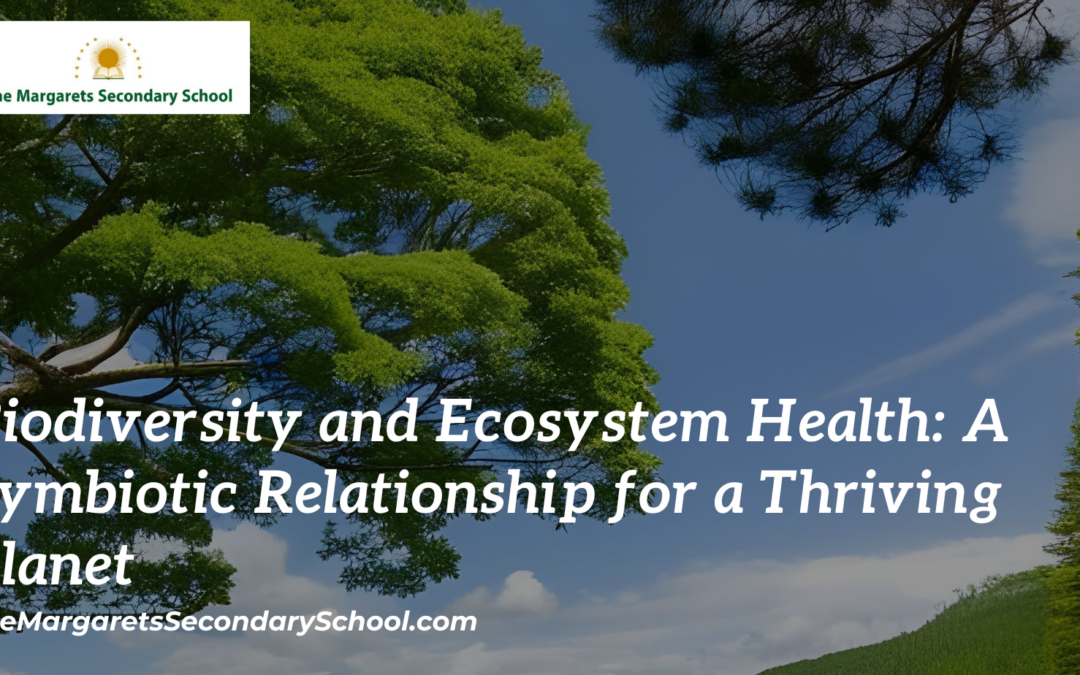Biodiversity and Ecosystem Health
The Earth’s rich tapestry of life is woven with a myriad of species, each playing a unique role in the intricate web of ecosystems. This diverse array of organisms, known as biodiversity, forms the foundation of healthy and resilient ecosystems. The relationship between biodiversity and ecosystem health is a dynamic interplay that underscores the importance of preserving the planet’s biological diversity for the well-being of both nature and humanity.
The Pillars of Biodiversity: Variety, Complexity, and Interdependence
Biodiversity encompasses the astonishing variety of life forms on Earth, from microorganisms to towering trees, and from delicate insects to apex predators. It also encompasses genetic diversity within species and the diversity of ecosystems themselves, which range from oceans to rainforests, deserts to grasslands.
This variety is crucial for the complexity and stability of ecosystems. Each species has its unique role, or “ecological niche,” that contributes to the overall functioning of the ecosystem. For example, predators help control prey populations, while plants provide oxygen, sequester carbon dioxide, and support entire food webs. The intricate relationships between species, such as pollination and seed dispersal, create a delicate balance that sustains life.
Ecosystem Health: The Balance of Nature
Ecosystem health refers to the overall condition, stability, and resilience of an ecosystem. Healthy ecosystems are characterized by a balanced distribution of species, efficient nutrient cycling, and robust food webs. When biodiversity is intact, ecosystems are better equipped to withstand disturbances, such as disease outbreaks, climate fluctuations, and natural disasters.
The concept of “ecosystem services” further emphasizes the importance of biodiversity. Ecosystems provide a wide range of services that benefit humanity, including clean water and air, pollination of crops, regulation of climate, and even recreational and cultural value. These services are directly tied to the health and functioning of ecosystems, and their preservation relies on the maintenance of biodiversity.
Threats to Biodiversity and Ecosystem Health
Despite its critical importance, biodiversity is facing unprecedented threats. Human activities such as deforestation, habitat destruction, pollution, overfishing, and the introduction of invasive species are driving a rapid decline in species populations and habitat quality. As species disappear, ecosystems become imbalanced, leading to a cascade of negative effects that can ultimately impact human societies.
Loss of biodiversity can disrupt natural processes, such as nutrient cycling and disease regulation, and reduce the resilience of ecosystems. For instance, the decline of pollinators like bees and butterflies jeopardizes the production of fruits and vegetables that make up a significant portion of our diets.
Conservation and Restoration: Nurturing Biodiversity for the Future
Efforts to safeguard biodiversity and enhance ecosystem health are of paramount importance. Conservation initiatives aim to protect endangered species, restore degraded habitats, and establish protected areas to preserve biodiversity hotspots. Equally important is the sustainable management of natural resources, which involves responsible fishing, forestry, agriculture, and urban development practices.
In addition to conservation, ecological restoration plays a crucial role in reviving damaged ecosystems. Restoration involves reestablishing native species, enhancing habitat conditions, and promoting natural processes that support biodiversity. It’s a testament to the resilience of nature that, with the right interventions, ecosystems can bounce back and flourish.
The Global Call to Action
As we navigate an era marked by environmental challenges, acknowledging the inextricable link between biodiversity and ecosystem health is imperative. The United Nations’ Sustainable Development Goals include a specific target to halt biodiversity loss by 2030. International collaborations, scientific research, policy reforms, and public awareness campaigns are all integral to achieving this ambitious goal.
Preserving biodiversity and ensuring ecosystem health is not only a matter of environmental concern but also a matter of human survival and well-being. By recognizing the value of all species and the ecosystems they inhabit, we pave the way for a harmonious and sustainable coexistence with nature. Through our collective efforts, we can secure a thriving planet for present and future generations, where the symphony of life continues to flourish in all its diversity.





